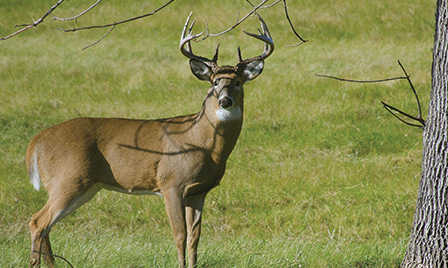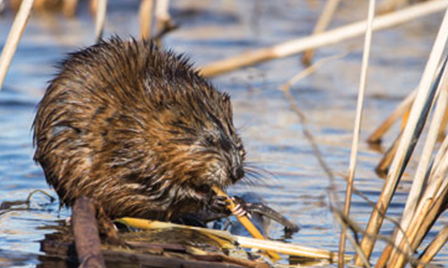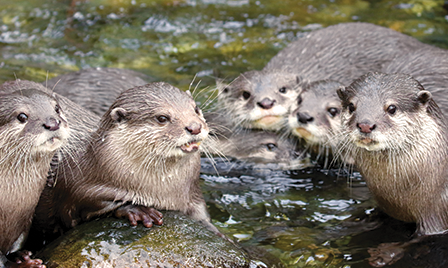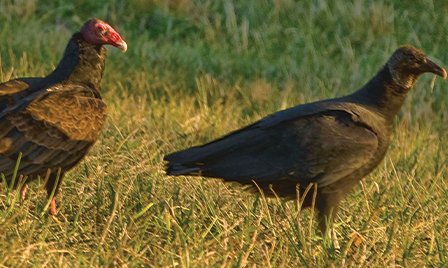Wildlife Damage
Most wildlife represent beneficial natural resources, yet overabundance of native species, increases in proximity of wildlife to human populations, and introduction of invasive species may result in damage to crops, livestock, property and natural resources. As human populations increase and expand, wildlife damage issues have become more prominent. Fortunately, most wildlife damage problems can be solved by applying preventive measures including modifying habitat, creating barriers and using repellents. In some situations, removal of individual animals may be necessary. A variety of programs and agencies in Kentucky provide assistance and information on managing wildlife damage problems. If wildlife are causing crop or other property damage check out the appropriate publications on this page and if you are dealing with nuisance wildlife then visit here.

Beaver Damage
The beaver is one of a few mammals capable of modifying its habitat to suit its needs. Beavers live in family units called colonies, which range in size from two to eight beavers.
View Beaver Damage...Deer Damage
White-tailed deer is the most sought after big game animal in North America. White-tailed deer lack upper incisors which results in a distinctive feeding pattern that looks like the plant was torn.
View Deer Damage...

Muskrat Damage
Muskrats are one of the largest rodents in Kentucky. Muskrats get their name from the pair of musk glands located at the base of their tails. Muskrats are vegetarians and love cattails.
View Muskrat Damage...
River Otter
River otters have a streamlined body, with thick muscular necks and shoulders. Occasionally confused with other animals such as mink, beavers and muskrats.
View Otter DamageVole Damage
Voles are small rodents that are forage feeders and have a wide diet. They are active feeders year-round and have been known to store food in their burrows for winter.
View Vole Damage...

Vulture Damage
Black vultures are a native species to Kentucky, and in the last 10-20 years their population numbers have increased to the point where they are common across much of the state.
View Vulture Damage...